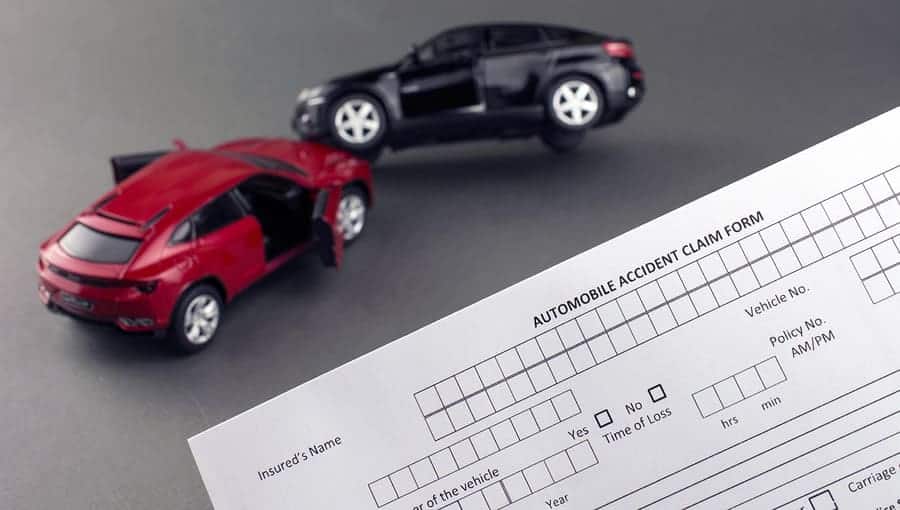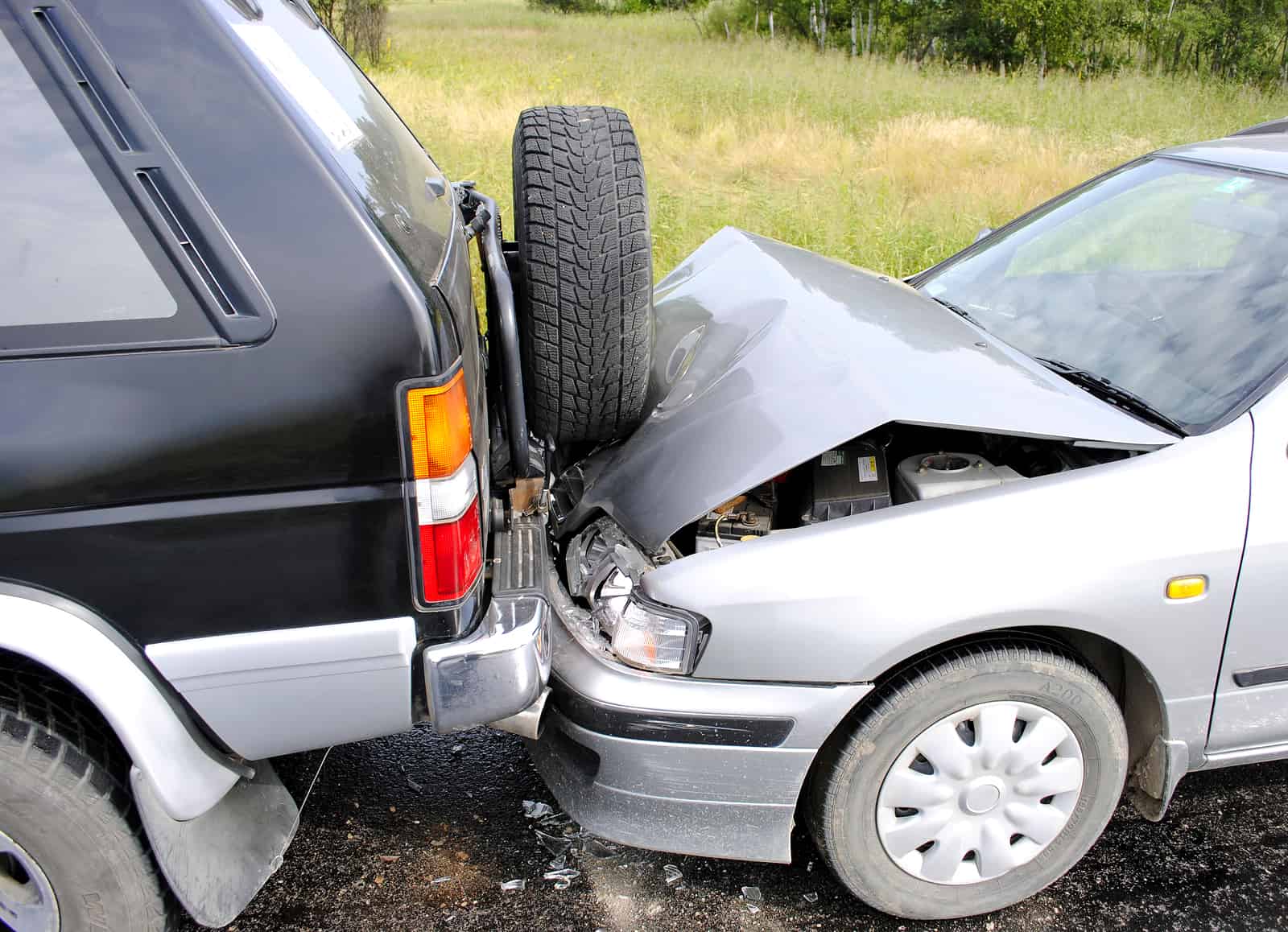Car accidents are unfortunately all too common. There’s a decent chance that at some point, you’ll be involved in one yourself. While it may be impossible to fully prepare for such a traumatic incident, understanding how fault is determined can help you better understand your situation should you find yourself involved in a car crash.

- What’s my car accident settlement worth?
- Find out in less than 60 Seconds!
Who Is At Fault In A Car Accident?
After all, the answer to this all important question can mean the difference between receiving a large car accident settlement check and walking away empty handed. Of course, determining fault in an auto accident is easier said than done. In thrticle, we’ll break down why fault matters and how you can determine who is at fault in a variety of different car accident scenarios.
Why Fault Matters
In most states, auto insurance coverage is fault-based. This means that the at-fault driver’s insurance company will be the one responsible for medical bills, car repairs and other losses, like lost wages or pain and suffering. These payments are made through the at-fault driver’s liability coverage.
In no-fault states, though, drivers may be required to carry personal injury protection insurance coverage, also known as PIP. When an accident occurs, each driver’s insurance company pays for their medical expenses up to a certain limit. Property damage, however, is still fault-based in no-fault states. The at-fault driver’s insurance company will need to pay for car repairs.
Proving Fault in Car Accident Settlement Cases
Every car accident is different, so there is no one size fits all formula for determining fault. With that said, there are a few procedures that are followed after just about every collision to help determine which driver is at fault. All drivers are encouraged to call the police after an accident to ensure an accurate police report is filed after the car accident. This first step helps guarantee that there is an official, unbiased record of the incident. Insurance companies use this report to better understand the accident and to get an idea of which driver was to blame. When determining fault in a car accident where it’s one driver’s word against the other’s, a police report can trump all. While there are instances where it’s possible to get a police report amended after a car accident, it’s not easy and it’s always better to get a clear, honest picture of how the accident occurred. So to the best of your ability always be honest and forthcoming with the police officers on the accident scene.
In addition to the police report, evidence gathered at the scene can help prove fault. Anyone involved in an accident should take photos, videos and interview witnesses when possible. While doing so, it’s important to never admit fault at the scene. Drivers should not lie about their role in a crash, and should report the facts of the incident to police. Still, people involved in a wreck shouldn’t jump to conclusions or apologize for things like slamming on their brakes. The true nature of an accident can be revealed in an investigation, but an apology from the mouth of one of the drivers involved can be enough to shift fault. Even if you believe you’re at fault, let the police and the insurance companies come to that conclusion independently.
Who Is At Fault in a Rear End Collision?
Picture this: you’re cruising along on the highway, following the speed limit and obeying traffic laws when the car in front of you slams on their brakes. You don’t have time to react, so you slam into the front cark, causing a rear end collision. Are you at fault? The answer might seem clear, but determining fault in a rear end crash isn’t always as straightforward as you might expect, and proving that you weren’t at fault could be the best way to get an above average rear end collision settlement.
In general, fault for rear-end collisions often falls on the driver in back. All drivers have a duty of care to prevent accidents whenever possible. In this case, the driver would likely be found at fault for not providing enough following distance between their vehicle and the one ahead of them. On the other hand, an investigation into the incident might reveal that the car in front did not have working brake lights at the time of the accident. Such a revelation could mean that the fault falls to the vehicle in front.
Who Is At Fault in a Chain Reaction Crash?
Determining fault can become even more complicated when more than two cars are involved. For example, if Driver A hits driver B because they were following too closely, Driver C may also hit Driver A. In such a scenario, drivers A and C will likely share the majority of the fault because neither followed from a safe enough distance. Driver B may also be considered at fault if their behavior immediately before the collision was erratic.
In a chain reaction crash like this one, witness reports, photos and other forms of evidence are crucial in determining fault and figuring out who will get what compensation for their multi-car accident settlement. When multiple parties are responsible for a collision like this one, the fault is often split between the insurance companies. In fact, you can be partially at fault for a crash and still collect damages from the other driver’s insurance company, depending on the incident.

- How Much Is Your Car Accident Settlement Worth?
Find out the maximum compensation you could receive.
- How Much Is My Car Accident Settlement Worth?
Who Is At Fault In A T-Bone Accident?
In a T-Bone car accident, one car slams into the broadside of another, often causing serious damage to one side of the vehicle that was hit and serious injuries for anyone on that side of the car. It’s not uncommon to see hip injuries, knee injuries, and sometimes head injuries and concussions in car accidents of this type.
Determining who is at fault in a T-bone car accident can be tricky. Often it’s the fault of the driver that did the “T-Boning”, and that’s what most people think at the scene, but there are many instances where this isn’t the case. For example, if the driver that got t-boned ran a red light, or didn’t come to a stop at a 4-way intersection because they were texting and driving, they would be the ones at fault. Similarly, a lot of T-Bone collision settlements involve a driver making a left hand turn without enough time or space to do so, putting the driver going the opposite direction in a position where they can’t avoid hitting the turning vahicle.
In situations like this one, evidence is key. Many T Bone collisions end up in a “he said-she said” argument, so having neutral eyewitnesses, traffic camera footage, and any other visual evidence can be the difference in getting fair compensation and walking away empty handed.
Who Is At Fault in a Sideswipe Collision?
Not to be confused with T-Bone collisions, a sideswipe car accident is where 2 cars traveling the same direction hit one another from the side, usually while changing lanes or merging onto the highway. Determining fault in a sideswipe collision settlement often comes down to right of way. This makes taking pictures of the vehicle damage immediately following the accident imperative to determining fault when changing lanes. In most sideswipe collisions, the evidence of the vehicle damage can go a long way in helping police and car accident claims adjusters determine who was at fault while changing lanes.
Who Is At Fault In a Head On Collision?
Head on collisions can be deadly, and are among the leading cause of wrongful death settlements in car accident cases. And while they are among the most dangerous types of car accidents to be involved in, it’s usually pretty easy to determine fault in a head on collision settlement. This is because by definition, in order to have a head on collision one car has to veer into oncoming traffic. In almost all head on collisions, fault lies with the driver who did so. Usually when this happens it’s the result of a driver falling asleep at the wheel, or being severely distracted or intoxicated, which can also bring the issue of punitive damages into play.
Legal Liability
Generally speaking, the insurance company of the at-fault driver will be responsible for payment of medical bills, lost wages and car repairs associated with the crash. Depending on your state, though, comparative negligence may come into play. This allows drivers who are partially at-fault to seek damages in proportion to their degree of responsibility for the collision. For example, if you were involved in an accident in which you are 30 percent to blame, you may pursue compensation for up to 70 percent of your damages.
Comparative negligence isn’t created equal in all 50 states, though. If you live in a modified comparative negligence state like Illinois, for example, you’ll only be able to pursue damages if you’re found to be responsible for 50 percent or less of the damages. In contributory or pure contributory negligence states, an all-or-nothing attitude is taken regarding fault. If you were even 10 percent at fault for the accident, you will not be able to pursue compensation from the other driver’s insurance company.
Seeking Legal Advice
Most people involved in car accidents aren’t experts on fault, nor do they have much experience handling insurance claims. That’s why seeking out the advice of an experienced car accident attorney can be so valuable. Fault may seem obvious to you, but without the insight of a knowledgeable lawyer, you can be caught off-guard by accusations of fault. Even if you’re sure you understand how your accident happened and which driver is to blame, it’s worth speaking with an expert. Many car accident attorneys offer free consultations, so you owe it to yourself to gather all the information you can about your options. Get started today by checking out Lawsuit Info Center’s car accident settlement calculator.

- Speak to a Car Accident Attorney
- Fast, Free & Confidential!


